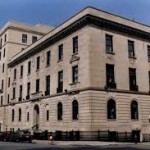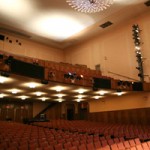My Musical Career|Part Ten
In my last blog post, I talked about my summer out at the Aspen Festival in 1973. It was my first sojourn out of New York, and it opened my eyes to the world outside of the Big Apple. I loved Colorado and thought the country out there was just great, and I was grateful for what I learned from my experience there. Just to show you how small the world is, I recently ran into John Yeh, who was a clarinet student at Aspen in 1973, and is now a distinguished member of the Chicago Symphony Orchestra. I was performing with the Du Page Symphony Orchestra at the time, and he was the featured soloist. I had a chance to talk with him after the concert, and he indeed remembered me from Aspen and we talked over old times.
A Look at My First Three Years at MSM
By the end of the summer of 1973, I was entering the final year of my undergraduate studies at Manhattan School of Music. I had reached the stage where I was no longer just a junior percussionist at the school, but was considered a veteran of sorts. I had been a member of the Manhattan Percussion Ensemble, Manhattan Wind Symphony, Manhattan Repertoire Orchestra, and a sometimes member of the Manhattan Orchestra, the school’s senior performing ensemble. Here are some of the highlights of my school “concert career” up until this point. To recap, during my first year, I joined the Repertoire Orchestra, sort of on a whim – actually a desire to break out of what I considered a rut of not playing in an ensemble. I was able to do so, thanks to the kindness of Paul Price and Jim Priess and with the approval of Maestro Anton Coppola.
The Memorable Spring Semester 1971
He was right, and as I remember listening to that tape after the event, I realized that I had a lot of work still ahead of me.
1971-72 Part One
Things went a little bit slower during the years 1972 and 1973. My performance experience during those two years, although not as limited as during my first semester at school, but since there were more than adequate numbers of senior percussionists to fill any vacancies in the Manhattan Orchestra, that left only the Repertoire Orchestra and the Wind Symphony as well as the Percussion Ensembles. Still, it was more than enough, as I was a relative neophyte, despite that memorable spring 1971 semester. Repertoire Orchestra’s schedule was being improved for the 1971-72 season. Instead of a semester of reading rehearsals to expose us to the orchestral literature and an opera workshop assignment in the spring, the orchestra was assigned a performance schedule for the whole school year. We were assigned to perform a fully staged performance of Bizet’s “L’Arlesienne” – a melodrama with music in the fall of 1971. This was in addition to the reading rehearsals. In the spring 1972 semester, we had two assignments: A full orchestral concert in early spring, and the usual opera workshop performances at the end of the semester. Another difference is that Maestro Coppola would conduct only the reading rehearsals and opera workshop performances. Gianpaolo Bracali was to conduct “L’Arlesienne”, and Dr. Paul Eisler, who was my sight-singing teacher, would conduct the orchestral concert. My fellow percussionists included Wayne Church, Seve DiLorenzo, and John Orlowski. We were a good group and had a good season together. Wayne and I became good friends, and we spent a lot of time listening to music and learning the repertoire together.
L’Arlesienne was an interesting experience. A smaller orchestra was needed as the accompaniment, so the Repertoire Orchestra was split in two. One half of the orchestra was assigned to reading repertoire, and the other half was assigned to the Bizet melodrama. I was fortunate to be assigned to the Bizet. John Orlowski was assigned to play percussion, which in this case was confined to the snare drum and the tambour de provencale.
The staging was done by Basil Langton, a renowned actor/producer who was working at MSM as a drama coach, and who later starred in Star Trek: Voyager in the opening episode “Caretaker: Parts One and Two”. The rehearsals and performances went off really well and it was interesting to play the music as Bizet originally conceived it. This was my first assignment in the pit as timpanist (other than as the replacement for the regular timpanist in “Cendrillon” in the spring.
The timpani that I used, and that all of us used at the time were the Ludwig Professional Symphonic models – outside the kettle spider mechanism – kettles not suspended, and regular collar. The timpani heads were Ludwig Ensemble heads – hazy – not clear. I was learning to play them properly and was discovering the joys of using the larger drums for A and D – 32 inch and 29 inch and to appreciate the tightness and ease of articulation – a la Kurt-Hans Goedicke. It was a lot of fun!



Recent Comments